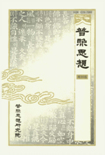본 연구에서 보살이라는 단어는 자아개념에 기초하고 있는 단어로 불교 특유의 무아론과 비교적 잘 호응하지 않으며 불교를 제외한 인도일반의 종교적 심성과 가까운 개념이라는 문제의식에서 시작하여, 이러한 비불교적 사상이 어떻게 초기경전에서 성립된 것인지 살펴보았다. 그 결과 보살은 익히 알려진 석존의 전생을 말하는 게 아니라, 붓다가 될 유정이 잉태, 출산 될 시에 기적이 일어나는 사건을 설명하기 위해, 지혜를 가진 유정이 태어났기 때문이라는 맥락에서 보디-사트바가 도입되었다. 여기서 이 의미가 점차 확장되어 석존의 전생 일반을 지칭하는 용어가 되었을 것이다. 이후 기성불교가 주장한 아라한과가 아니라 불과를 추구한 일군의 승려들이 나타났다. 이들은 기성불교의 경전이나 사원생활에 대해서 새로운 경전을 편찬하고 아란야 등의 새로운 생활양식을 선호하였다. 특히 사원생활이 아니라 아란야 등의 생활 속 고행에 가까운 수행을 찬미하는 것은 앞서 말한 인도일반의 종교적 심성과 가까운 경향이었다. 그들은 기성불교의 사원경제에서 핵심적 역할을 하는 탑이나 성물 등의 복전에 대해서 아란야의 수행자에 대한 보시라는 새로운 구조를 필요로 하였고, 이는 그들이 석존께서의 6년 고행에 해당하는 수행자로서 이미지를 겹쳐보이게 하는 일종의 트릭을 필요로 하게 하였다. 그들은 아마 스스로를 붓다를 이루기 전의 수행자로 칭하고자 하였으며 이것에 걸맞는 기성불교의 용어가 보살이었다. 하지만 아란야의 수행자로서는 지혜를 추구할 수는 있으나 지혜를 갖춘 완성형일 수는 없음으로 지혜를 추구, 욕구하는 유정으로서 지혜를 갖춘 유정에 비해서 문법적으로 다소 튀는 형식의 의미를 구축해갔을 것이다.
This study aims to understand the meaning of the bodhisattva idea in its earliest period by focusing on the previous studies on the idea of bodhisattva. Starting from the problem that the word bodhisattva is based on the concept of ātman, which does not resonate with the Buddhist theory of anātman, and is close to the religious mindset of India in general outside of Buddhism, we examine how this non-Buddhist idea was established in the early sutras. As a result, bodhi - sattva was introduced in the context of the birth of a bodhisattva who 'possessed' wisdom to describe the miraculous event of the conception and birth of the bodhisattva, rather than referring to the known past lives of the Buddha. From here, the meaning would have been gradually expanded to refer to the Buddha's past lives in general. After this, a group of monks emerged who, in a sense, sought the Buddha, not the Arhats as advocated by established Buddhism. They composed new texts against the scriptures and temple life of established Buddhism and favored a new way of life, such as araṇya. In particular, the praise of the araṇya life, not the temple life, and the praise of ascetic practices was close to the religious mindset of India in general, except for Buddhism, as mentioned earlier. They sought to replace the view of the pagoda and the relics, which played a central role in the temple economy of established Buddhism, with the view of the araṇya practitioner. This necessitated a trick of sorts in which they superimposed images of themselves as practitioners of the six-year asceticism of the Buddha. So they probably wanted to refer to themselves as practitioners who would become Buddhas, and the most appropriate ready-made Buddhist term for this would have been bodhisattva. However, as practitioners of aranyā, they could seek wisdom, but not in the sense of having wisdom, so they would have constructed a form of meaning that was grammatically more difficult than the wisdom-seeking, wisdom-desiring sentient being, the wellspring of wisdom.
Ⅰ. 서론
Ⅱ. 선행연구의 검토 및 보살의 원의
Ⅲ. 보살개념의 변화이유
Ⅳ. 결론
(0)
(0)
